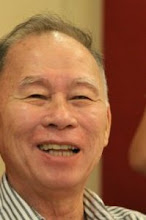Professor Johan
P. Mackenbach says that “Only the Poor Die Young”.
“People who are lower
on the socioeconomic ladder (indicated by their level of education, occupation,
or income) have shorter and less healthy lives, on average, than those on
higher rungs. Indeed, life expectancy at birth often varies by 5-10 years,
depending on social and economic well-being, with poorer people spending 10-20
more years of life suffering from illness or disability than their wealthier
counterparts.
Since the end of
World War II, Western European countries have tried to reduce socioeconomic
inequality, or offset its consequences, through progressive taxation, social
security programs, and a wide range of collectively financed provisions, such
as public housing, education, health care, and cultural and leisure facilities.
But, while these policies have reduced inequalities in some social and economic
outcomes, including income, housing quality, and health-care access, they have
been insufficient to eliminate health inequalities.
Long-term time-series data indicate that the socioeconomic
mortality gap narrowed before the 1950’s, but has grown substantially since
then. More puzzling is the fact that more generous welfare policies do not
translate into smaller health disparities. Even the Nordic countries – world
leaders when it comes to creating universal and well-designed welfare policies
that cover citizens from cradle to grave – face significant health disparities,
despite their relatively low income inequality. “
The Philippines should therefore be more discerning in adopting
measures to solve its inequality problems. We can take some pointers from the
following statistical data.
Stats from CIA World Factbook on
POVERTY INDEX
LONGEVITY -
world 68.09 yrs.
RELIGIOUS INFLUENCE
Christian 33.39%
(Roman Catholic 16.85%, Protestant 6.15%, Orthodox 3.96%, Anglican 1.26%)
Muslim 22.74%
Hindu 13.80%
Buddhist 6.77%
Sikh 0.35%
Jewish 0.22%
Baha'i 0.11%
other religions
10.95%, non-religious 9.66%, atheists 2.01% (CIA Factbook 2010 est.)
|
COUNTRY
|
World Poverty
Ranking as % of people below poverty line
|
LONGEVITY
Years
|
DOMINANT
RELIGION
|
|
|
TAIWAN
|
152
|
1.18
|
79.71
|
Buddhism
|
|
MALAYSIA
|
150
|
3.60
|
74.28
|
Muslim
|
|
FRANCE
|
145
|
6.20
|
81.56
|
Catholic
|
|
SWITZERLAND
|
143
|
6.90
|
82.28
|
Catholic
|
|
SERBIA
|
140
|
8.80
|
74.79
|
Orthdox
|
|
CANADA
|
137
|
9.40
|
81.57
|
Catholic
|
|
THAILAND
|
136
|
9.60
|
66.72
|
Buddhism
|
|
VIETNAM
|
134
|
10.60
|
72.65
|
NONE
|
|
SYRIA
|
131
|
11.90
|
75.14
|
Muslim
|
|
RUSSIA
|
127
|
13.10
|
69.85
|
NONE
|
|
INDONESIA
|
126
|
13.33
|
71.90
|
Muslim
|
|
CHINA
|
125
|
13.40
|
74.99
|
NONE
|
|
UNITED
KINGDOM
|
124
|
14.00
|
80.29
|
Protestant
|
|
SOUTH
KOREA
|
122
|
15.00
|
79.55
|
Catholic
|
|
UNITED
STATES
|
120
|
15.10
|
78.62
|
Protestant
|
|
JAPAN
|
117
|
15.70
|
84.19
|
Buddhism
|
|
MEXICO
|
108
|
16.20
|
76.86
|
Catholic
|
|
SPAIN
|
100
|
19.80
|
81.37
|
Catholic
|
|
ISRAEL
|
90
|
23.60
|
81.17
|
Jewish
|
|
LAOS
|
82
|
26.20
|
63.14
|
Buddhism
|
|
GHANA
|
74
|
28.50
|
65.32
|
Protestant
|
|
ARGENTINA
|
71
|
30.00
|
77.32
|
Catholic
|
|
CAMBODIA
|
62
|
31.00
|
63.41
|
Buddhism
|
|
BURMA
|
58
|
32.70
|
65.60
|
Buddhism
|
|
PHILIPPINES
|
57
|
32.90
|
72.21
|
Catholic
|
|
AFGHANISTAN
|
52
|
36.00
|
50.00
|
Muslim
|
|
PAPUA
NEW GUINEA
|
48
|
37.00
|
66.66
|
Christian
|
|
TIMOR-LESTE
|
36
|
42.00
|
67.06
|
Catholic
|
|
SOUTH
AFRICA
|
23
|
50.00
|
49.48
|
Christian
|
|
SENEGAL
|
17
|
54.00
|
60.57
|
Muslim
|
|
ZIMBABWE
|
10
|
68.00
|
53.86
|
Christian
|
|
HAITI
|
1
|
80.00
|
62.86
|
Catholic
|
ANALYSIS:
This statistical compilation negates the saying that only the poor die young,
nor does it indicate that religion has something to do with improving life
expectancy. It however points out that the poorer half of the world has had a
problem with either active insurgency or defective political governance and/or
moral degradation. It seems that Argentina and the Philippines share both
Catholic faith and better life expectancy than the other high-poverty
countries.
Let’s
take the high road. Verbum sapienti satis est.



